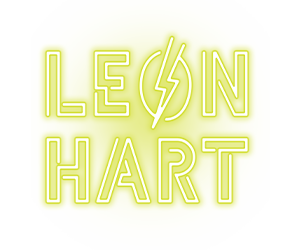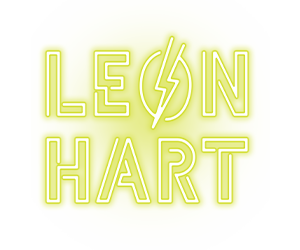Our world today is filled with distractions, which makes the ability to maintain focus and sustain attention more crucial than ever. Attention span, often referred to as the sweet spot of productivity, plays a significant role in our ability to accomplish tasks efficiently and effectively.
Understanding Attention Span
Attention span, often hailed as the cornerstone of cognitive function, is the duration a person can maintain focus on a task without succumbing to distractions. This cognitive process allows us to selectively engage with relevant information while filtering out extraneous stimuli that vie for our attention.
Biological, environmental, and psychological factors intricately interplay to shape our attention span. Biologically, genetic predispositions and variations in brain structure contribute significantly to individual differences in attentional capacity. Moreover, environmental factors such as ambient noise levels, lighting conditions, and ergonomic considerations can either bolster or undermine attentional control.
Psychological factors including stress, anxiety, and fatigue exert profound effects on attention regulation,
highlighting the intricate interplay between mind and environment in determining attentional focus.
Normally, there are 5 types of attention:
Selective Attention:
Selective attention functions as a cognitive filter, enabling individuals to hone in on specific stimuli while disregarding irrelevant information. This ability to prioritize salient cues is essential for efficient task execution and decision-making. For example, in a bustling office environment, selective attention allows employees to focus on pertinent work tasks amidst a cacophony of ambient noise and visual distractions.
Sustained Attention:
Sustained attention, synonymous with vigilance, underscores the capacity to maintain focus on a task over an extended duration. Crucial for activities requiring prolonged concentration, such as studying for exams or engaging in intricate problem-solving, sustained attention ensures sustained cognitive engagement and optimal performance outcomes.
Divided Attention:
Divided attention epitomizes the art of multitasking, involving the concurrent allocation of cognitive resources across multiple tasks or stimuli. While proficient multitaskers may perceive themselves as adept at juggling various responsibilities simultaneously, research suggests that dividing attention often compromises task performance and leads to heightened error rates.
Alternating Attention:
Alternating attention denotes the ability to seamlessly transition focus between disparate tasks or stimuli. Integral for tasks necessitating cognitive flexibility and adaptability, such as shifting between different work projects or toggling between various digital applications, alternating attention facilitates seamless task-switching and enhances overall productivity.
Executive Attention:
Executive attention encompasses higher-order cognitive processes that facilitate the orchestration and regulation of attentional resources. From planning and decision-making to inhibiting irrelevant information and monitoring task performance, executive attention plays a pivotal role in optimizing cognitive efficiency and goal-directed behavior.
Each type of attention contributes uniquely to the overall attentional landscape, with selective attention facilitating the prioritization of relevant information, sustained attention ensuring prolonged cognitive engagement, divided attention enabling simultaneous processing of multiple stimuli, alternating attention facilitating seamless task-switching, and executive attention orchestrating the allocation and regulation of attentional resources.

The Science Behind Attention Span
Attention span is governed by various regions of the brain, including the prefrontal cortex, parietal lobe, and thalamus. These brain regions work together to regulate attentional processes and maintain focus.
Neurotransmitters such as dopamine, norepinephrine, and serotonin play key roles in attention regulation. Imbalances in these neurotransmitter systems can affect attention span and contribute to attention-related disorders.
Attention is closely linked to other cognitive processes such as perception, memory, and decision-making. It serves as a gateway for information processing and significantly influences our ability to learn, reason, and problem-solve.
Attention Span and Productivity
The duration of attentional focus profoundly impacts task performance, serving as a pivotal determinant of productivity and efficiency. Studies consistently demonstrate a positive correlation between prolonged attention spans and heightened task completion rates, as individuals endowed with longer attentional capacities exhibit superior abilities to maintain focus and sustain engagement.
Conversely, individuals grappling with shorter attention spans encounter challenges in upholding concentration, resulting in diminished task accomplishment within stipulated time frames. Consequently, attention span emerges as a critical factor shaping the landscape of task performance, exerting far-reaching implications on productivity outcomes.
Multitasking might seem helpful, but it often lowers our focus and performance quality.
So, we need to balance using technology wisely and avoiding multitasking.
Practical Tips for Enhancing Attention Span
Establishing Routines and Rituals
Consistent routines and rituals can help train the brain to focus and minimize distractions. Establishing a designated workspace, setting specific work hours, and creating a daily routine can improve attention span and productivity.
Incorporating Regular Breaks
Taking regular breaks allows the brain to rest and recharge, which can improve attention span and prevent burnout. Short breaks between tasks or Pomodoro-style work intervals followed by brief rest periods can enhance focus and productivity.
Utilizing Tools and Apps for Focus Enhancement
Various tools and apps are available to help improve focus and attention span. These include time management apps, distraction-blocking software, and mindfulness meditation apps. By incorporating these tools into their daily routines, individuals can optimize their attentional resources and enhance productivity.
Importance of Sleep and Nutrition
Adequate sleep and nutrition are essential for optimal cognitive function and attention regulation. Poor sleep quality and unhealthy dietary habits can impair attention span and negatively impact productivity. Prioritizing sleep hygiene and consuming a balanced diet can improve overall brain health and cognitive performance.
In conclusion, attention span plays a vital role in our ability to focus, process information, and accomplish tasks effectively. By understanding the factors influencing attention span and implementing strategies to enhance focus and productivity, individuals can optimize their cognitive resources and achieve greater success in both their personal and professional lives. Remember, cultivating a healthy attention span is not only beneficial for productivity but also essential for overall well-being and success.







